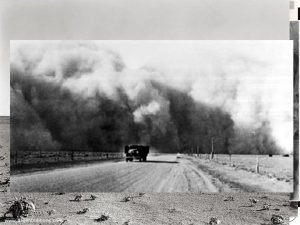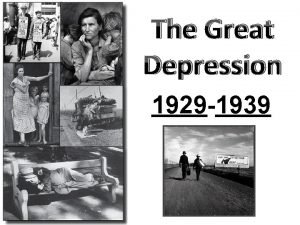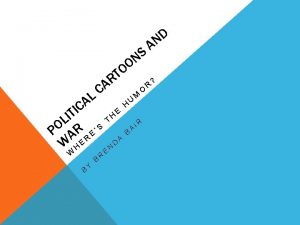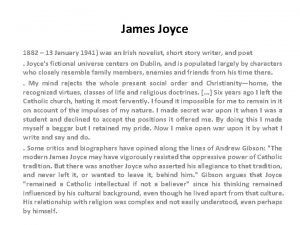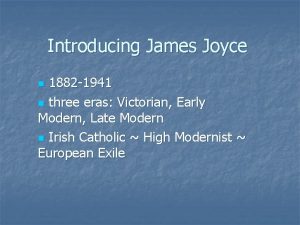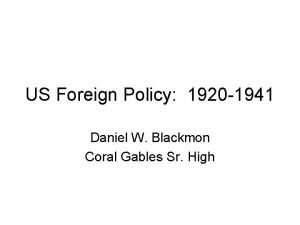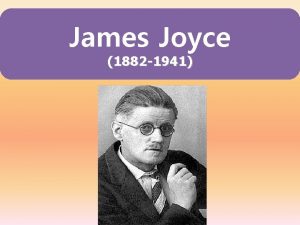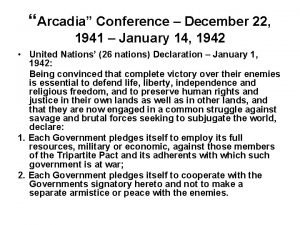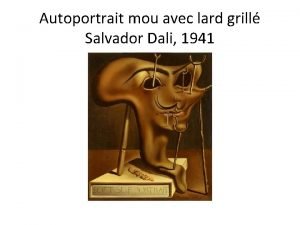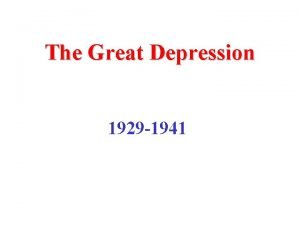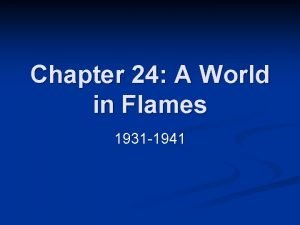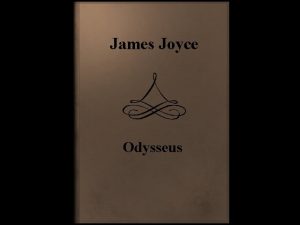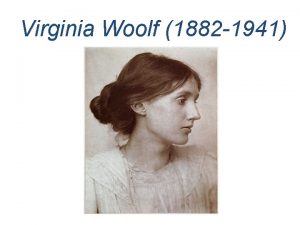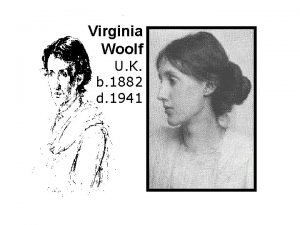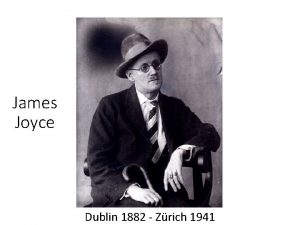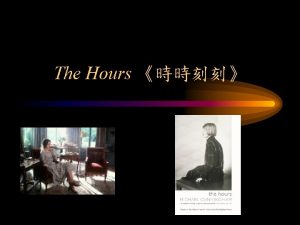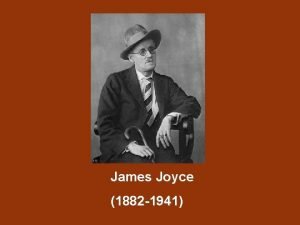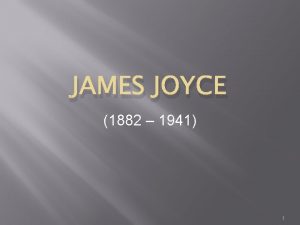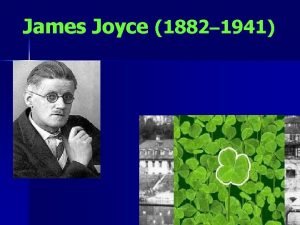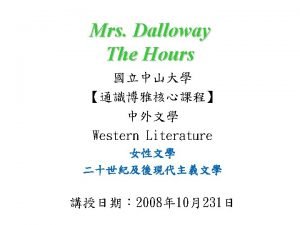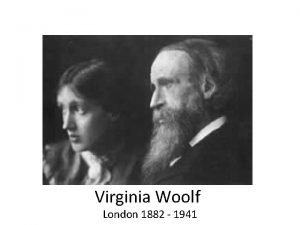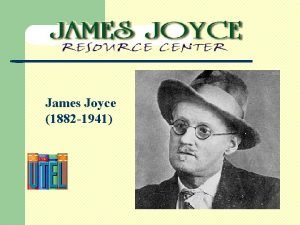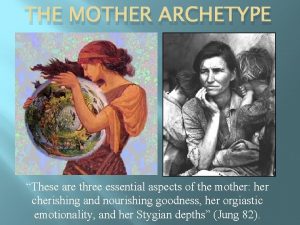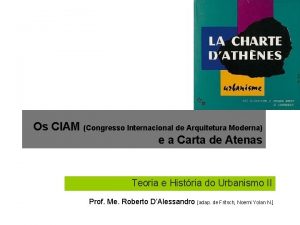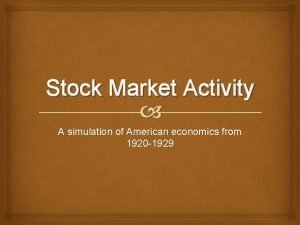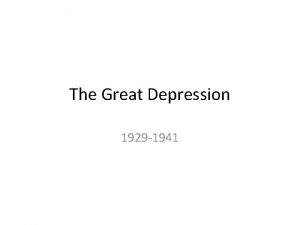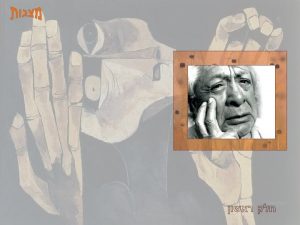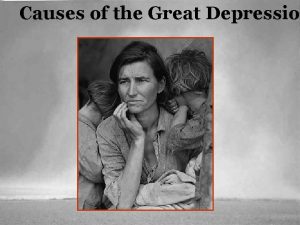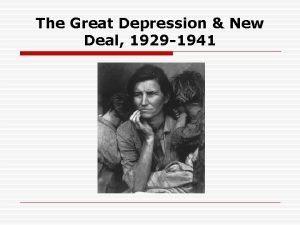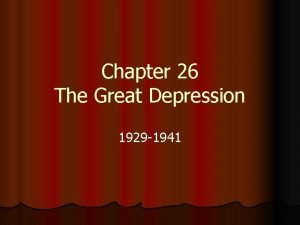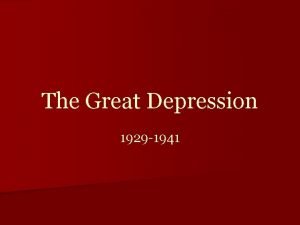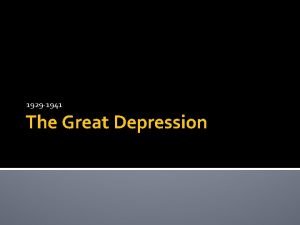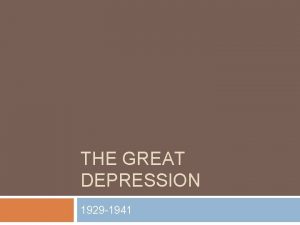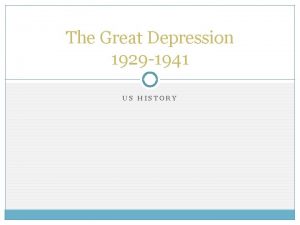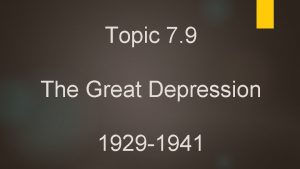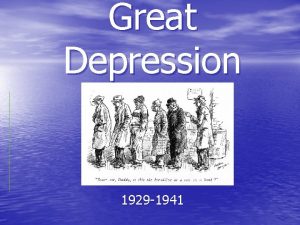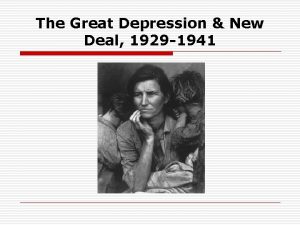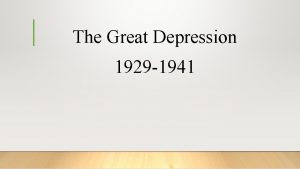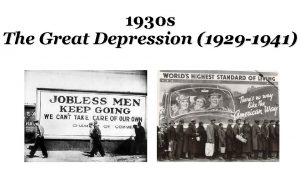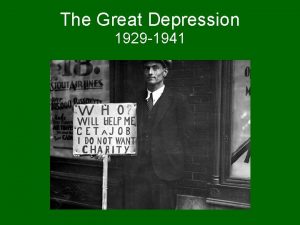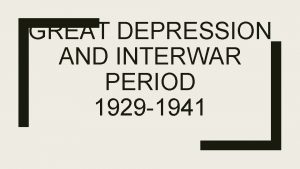The Great Depressio n 1929 1941 A Mother







































- Slides: 39

The Great Depressio n 1929 -1941 A Mother of Seven Children Karen H. Reeves Burke County High School By Dorothea Lange

Presidential Economic Policies • Republican Prosperity – Favored “handsoff” policy – Argued for tax cuts to big business – Progressive Era agencies aided big business Warren G. Harding Calvin Coolidge

Foreign Policies • 1921 -1928 Washington Naval Conference: restrain arms race between US, Britain, France, Italy, Japan by limiting battleships • 1928 Kellogg-Briand Pact: 62 nations swore to make war “illegal” • 1929 Young Plan scrapped 1920 Dawes Plan (attempt to regain German reparations)

Causes Overproduction & Under Consumption 1. Companies overproduced consumer goods 2. Consumers did not have the money or credit to continue to purchase goods 3. European markets recover from WWI by 1926

Causes Decline in Farm Prosperity 1. Decline in the 1920’s contributed to the overall depression of the 1930’s 2. Early sign of economic weakness

Causes International Trade 1. Serious dislocations were a significant cause 2. Smoot-Hawley Tariff of 1930 raised tariffs and triggered decline in trade of 40% within three years

Causes of the Great Depression Of 1921 Over production k ac y” l “B sda e Tu 1929 Prosperity of 1924 European Recovery 1926 Stock Market Crash! High Tariffs (Economic Protectionism) Europe can’t pay debt “Buying stocks on the margin” Exports fell 70% Wages cut Layoffs Little income

Consequences of the 1929 Stock Market Crash 1. Loss of confidence in the stock market 2. Reduction in output of manufactured goods 3. Decline in investment of capital goods

Social Consequences • By 1932 economy bottomed out: 25% unemployment • Petty theft, held up trains moving goods • Women often led protests • Gov’t officials often beaten = Gangsters become heroes

Rural Problems • Farmers hit with foreclosures & evictions • Dust Bowl hit: caused by erosion because of overproduction • Migrants move to Calif. : “Oakies” • Grapes of Wrath


Oakies

Urban Problems • Homeless lived in tents, shacks = “Hoovervilles” • Soup kitchens, sold apples • Boarding houses, took in laundry • More female heads of households

Minorities • • Unemployment 2 X “Last hired, first fired” Often unskilled Hispanics barred from jobs in SW

Herbert Hoover Election of 1928 • • • (Rep)Easily won over (Dem) Al Smith (Catholic, Brooklyn, opposed to Prohibition) Oversaw food production during WWI (reputation as good administrator) Basic “laissez-faire” economic policies Elected in Prosperity Depression hit!

Bonus Army • 1932 Bonus Expeditionary Force (17, 000 WWI vets + families) marched on D. C. • Wanted bonus promised by 1945 • Hoover used force (included Mc. Arthur, Eisenhower, Patton) • 4 killed, 1000+ injured (inc. police) Hoover’s popularity plummets!!!

Hoover’s Economic Policies 1. Voluntary private action rather than gov’t intervention 2. Get businesses to maintain wages 3. Presidential Organization for Unemployment Relief = raise private funds (exhausted) 4. Supported federal loans to private businesses + state/local gov’ts. 5. Reconstruction Finance Corp (RFC) 6. Cut taxes, increased federal works budget, BUT = Too little too late!

Election of 1932 Roosevelt Franklin D. • • • (Rep): Hoover vs. (Dem) FDR Very little difference in platforms = FDR landslide Wealthy, Harvard Gov. of New York Polio at 39 “Fireside Chats” “The only things we have to fear is fear itself!”

FDR’s Economic Policies “Recovery, Relief, Reform” 1. Favored direct federal relief to individuals 2. Sought to reconstruct capitalism 3. Used deficit spending on public works programs to revive economy 4. Largest employer in 1943 Public works Artists/musicians Writers Literacy programs

FDR’s “New Deal”

First Hundred Days • Bank Holiday March 5 -13, 1933: “Saved Capitalism” • Following concerns addressed • Restore confidence in banking system • Reduce unemployment by creating jobs • Raise farm prices by restricting production • Provide mortgage support for homeowners • Create agency for modernizing certain areas Took immediate action with legislation

Civilian Conservation Corps (CCC) Jobs for youth

Agricultural Adjustment Act (AAA) 1933 1. Raise farm prices by limiting production 2. Nat’l crop controls: subsidies to farmers who limited specific crops 3. Unpopular: Hungry Americans furious with crop destruction

National Industrial Recovery Act (NRA) 1933 1. Fostered gov’t – business cooperation 2. Suspended anti-trust 3. Business set prod. Quotas, prices, wages, working conditions 4. Section 7 A: right to unionized 5. Declared unconstitutional 1935

Tennessee Valley Authority (TVA) 1933 1. Provide economic development in Tennessee Valley 2. Flooded Tenn. Valley to provide hydroelectric power 3. Used eminent domain to gain access to land

Critics of the New Deal 1. Conservatives: Conservatives “weakened business”, were anti-socialist, vs. excessive spending on relief 2. Liberals: “favored business vs. little guy”, felt it didn’t enforce Section 7 A 1. Unions increased from 325, 000 in 1932 to 1. 5 million in 1935 2. Strikes violently put down, “scabs”

Individual Critics of the New Deal 1. Father Coughlin: (Detroit Priest) anti-semetic, mixed religion/social justice , had 30 million radio listeners 2. Huey Long: (LA) 1934, created “Share-Our-Wealth” society (socialist): plan to redistribute wealth to provide free ed. , oldage pensions • • • 7 million members Vs. Tulane = LSU Assassinated (All the King’s Men)

FDR’s Second “New Deal” 1935

Wagner Act Labor had right to organize + collective bargaining (Section 7 A) Nat’l. Labor Relations Act Enforced Wagner Act

Social Security Act (SSA) • Retirement income for workers 65+ • Contributors: employee + employer • Unemployment, aid for dependents • Excluded ¼ of workers, no health insurance

Banking Act Shifted banking responsibilities to Federal Reserve & away from private banks Reserve Act of 1935 Graduated income tax, increased estate & corporate taxes

Soil Conservation Act • Prevent another Dust Bowl

Emergency Relief Appropriation Act • $5 billion, largest appropriation to date: public employment • WPA (Works Progress Administration): 9 mil. jobs • NYA (Nat’l. Youth Administration): part-time jobs to youth

Election of 1936 • Roosevelt Franklin D. • • (Rep): Alf Landon vs. (Dem) FDR New Deal formed unprecedented coalition Landon lost his own state (Kansas)

Court-Packing Scheme Supreme Court declared parts of New Deal unconstitutional • • FDR tried to “pack” (add more justices to) the Supreme Court • Goal: to insure New Deal laws would be found constitutional

New Deal & Black Americans Never pushed Civil Rights bill • • Programs helped black (still were segregated) • Eleanor Roosevelt popular

Labor • American Federation of Labor (AFL, segregated) + Congress of Industrial Organizations (CIO, more radical) began series of aggressive strikes vs. GM in 1937 (Ford held out until 1941) • Membership jumped from less than 3 mil. (1932) to 9 mil (1939) "I have pleaded (labor's) case, not in the quavering tones of a feeble mendicant asking alms, but in the thundering voice of the captain of a mighty host, demanding the rights to which free men are entitled. "- John

Impact of the New Deal 1. Restructured American capitalism 2. Used gov’t. to enhance social welfare 3. Partially successful in reducing unemployment, reviving economy 4. Dem. Party emerged as majority party 5. U. S. did NOT emerge from Depression until defense contracts of WWII

Things it did NOT do: 1. 2. 3. 4. 5. 6. Integrate the armed forces Sponsor the Equal Rights Amendment Include civil rights programs Establish Bureau of Indian Affairs Nationalize basic industry Provide for legal recognition of unions for migrant workers
 When was the great depressio
When was the great depressio Great stock market crash 1929
Great stock market crash 1929 Great depression 1929
Great depression 1929 Political cartoon stock market crash 1929
Political cartoon stock market crash 1929 Mother teresa poem
Mother teresa poem Chapter 8 mother to mother
Chapter 8 mother to mother 1978-1941
1978-1941 “ho hum!” political cartoon by dr. seuss, 1941
“ho hum!” political cartoon by dr. seuss, 1941 1941-1882
1941-1882 Introducing james joyce
Introducing james joyce 1941
1941 Aldeia de pescadores (1950)
Aldeia de pescadores (1950) 1941
1941 What is the stream of consciousness technique
What is the stream of consciousness technique 1941-1882
1941-1882 Arcadia conference 1941
Arcadia conference 1941 1941-1882
1941-1882 Autoportrait mou avec du lard grillé analyse
Autoportrait mou avec du lard grillé analyse Prosinec 1941
Prosinec 1941 1941
1941 A world in flames, 1931–1941
A world in flames, 1931–1941 1941-1882
1941-1882 1941-1882
1941-1882 1941-1882
1941-1882 1941-1882
1941-1882 1941-1882
1941-1882 1941-1882
1941-1882 Kode kentongan
Kode kentongan 1941
1941 James joyce birthplace
James joyce birthplace 1882-1941
1882-1941 1941-1882
1941-1882 1941
1941 1941-1882
1941-1882 1941-1882
1941-1882 Earth mother archetype examples in movies
Earth mother archetype examples in movies Frankfurt 1929
Frankfurt 1929 Wall street crash of 1929
Wall street crash of 1929 Mammoth oil stock 1920
Mammoth oil stock 1920 Kriza ekonomike boterore 1929
Kriza ekonomike boterore 1929
